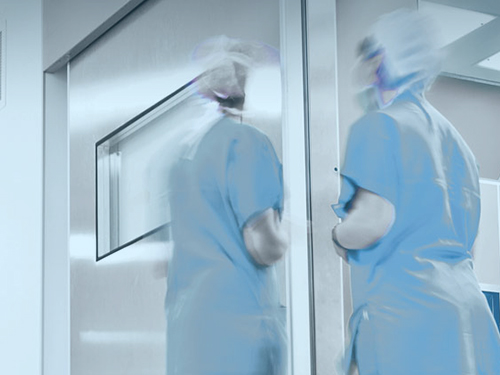Now, more than ever, healthcare facilities are experiencing an increased demand for patient care. And with more people to treat and protect, those working or residing within these spaces are at an even greater risk in the event of a fire emergency. Moving patients unnecessarily, such as in the event of a false alarm, can seriously impact their recovery. Therefore, it is crucial that these buildings are fitted with the highest quality life safety systems to ensure ultra-reliable protection.
While hospitals, care homes and other healthcare facilities may offer different types of care, they all require reliable, functioning detection equipment that offers above-average life safety protection.
For example, our ESP range of devices offers a diverse portfolio of intelligent, addressable products that are feature-rich, easy to install and offer incomparable reliability. Tested to the highest European and international standards, the range encompasses sensors, modules, manual call points, audio-visual alarms and sounders.
The intelligent sensor range consists of smoke, heat, multi (smoke and heat) and multi with CO sensors. False alarm reduction has been engineered into the products through the redesign of the smoke chamber and optics within the smoke and multi sensors. In doing so, these sensors are far more reactive to their environments and therefore equally more responsive to multiple smoke types. This, combined with the range’s Enhanced Systems Protocol (ESP), a platform that provides faultless communications between the panel and sensors, means the ESP sensor range delivers precision fire detection. This is of utmost importance within healthcare environments, where unnecessary evacuations caused by false alarms can be traumatic for patients and residents, given their restricted mobility.
Hospitals are some of the largest and busiest healthcare facilities but are also the most complicated in their life safety detection needs. These large-scale buildings need vastly complex systems that can connect together to provide full visibility of the environment. Here, Hochiki’s L@titude offers an innovative solution to some of the most technically challenging applications in life safety, whilst being easy to install and configure.
This control and indication system is sophisticated in its extensive ability to connect 2-16 loops from one control panel and then network up to 32 panels together, thanks to its modular nature and networking capabilities. Despite its high-tech features, L@titude is extremely user-friendly and simple to operate allowing up to 64 user profiles – all of which can be granted varying levels of access. To further aid the flexibility of the L@titude system, the panel will support up to 5,000 cause and effect entries, allowing the system designer to take full advantage of the panel’s intelligent programming of inputs and outputs while controlling many aspects of the building’s life safety system.
Immediacy is a common theme throughout the healthcare industry, be it providing treatment or reacting to a patient’s symptoms. This is no different when installing a life safety system. More frequently, emergency extensions or temporary structures are needed to provide additional care. These projects require quick turnaround times and so installing more efficient detectors is a must. Wireless systems are quick to deploy and remove and so are ideal for these scenarios.
Hochiki’s FIREwave family of products offers a hybrid product that can be fully integrated into any existing hardwired fire detection system. Using sophisticated radio technology, this wireless system not only provides the user with complete flexibility and rapid installation but also mitigates installation challenges, even on the most difficult or sensitive sites, while still achieving optimum performance.
Ultimately, healthcare facility managers have a duty of care to undertake every possible precaution to prevent moving patients unnecessarily, such as in the case of a false alarm. By understanding these environments and choosing systems accordingly, duty holders can ensure they reduce risks across their premises.
For a full overview of how Hochiki Europe’s offering can benefit healthcare environments, visit: https://www.hochikieurope.com/sector/healthcare
